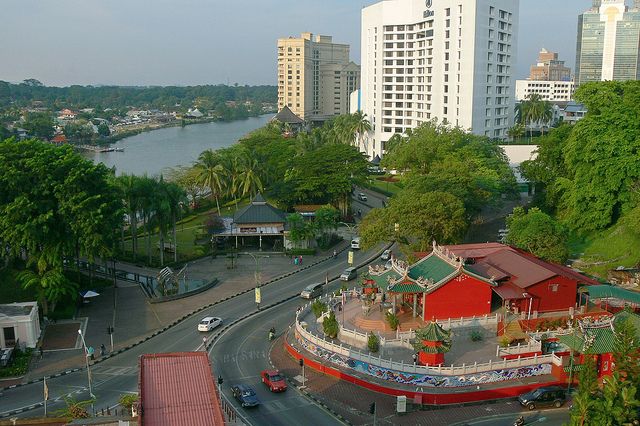
Title
By Wee Kean Fong - April 29, 2013
This article was originally posted on the WRI blog, Insights.
Stacy Kotorac, a project coordinator/research assistant with the Greenhouse Gas Protocol, also contributed to this blog post.
Low-carbon city development has become a central part of the Malaysian government’s strategy to meet its greenhouse gas (GHG) commitments. The country, currently ranked second in terms of emissions per capita in Southeast Asia, has committed to reduce the emissions intensity of its gross domestic product (GDP) by 40 percent from 2005 levels by 2020.
Many Malaysian cities have created ambitious, low-carbon visions in order to meet national targets. However, many cities don’t yet have a credible GHG inventory or a comprehensive blueprint to help them systematically implement and monitor low-carbon actions. Without such a framework, it is nearly impossible to establish baseline measurements, set goals, or measure progress.
That’s why the GHG Protocol is currently working with partners to develop a standard methodology, the Global Protocol for Community Scale Emissions (GPC), as well as an accompanying toolkit that cities will be able to utilize to plan for their low-carbon development. Last year, we released the GPC Pilot Version 1.0. Over the next six months, about 30 cities will pilot test it.
Planning for a Low-Carbon City
I attended the Fourth High Level Seminar on Environmental Sustainable Cities in Hanoi, Vietnam last month. During my presentation, I highlighted the need for measuring and reporting city-wide GHG emissions. I made the case that cities should conduct GHG inventories based on the GPC (which has been endorsed by the World Bank, UN Environment Programme, and UN-HABITAT). The inventories will help cities benchmark their emissions, identify emission sources, and develop blueprints to mitigate them.
Two examples illustrate the difference that effective low-carbon planning can make:
1) Iskandar Development Region: A case of good practice
Iskandar, Malaysia is one of the fastest-growing regions in Malaysia. Ten years ago, its regional master plan was conventional, without any consideration of low-carbon development options like transit-oriented development and green buildings.
In 2011, experts from the Universiti Teknologi Malaysia (UTM) convened a working group to help the Iskandar Regional Development Authority (IRDA) develop a blueprint to make Iskandar, Malaysia the first low-carbon development region in the country. The blueprint contains the current level of GHG emissions, GHG reduction targets for 2025, and step-by-step action plans to achieve these targets.
The initiative received strong political buy-in at both the local and national levels, as it is in line with the federal government’s pledge to cut emissions. With both a vision and a plan to achieve it, IRDA is ready to implement the low-carbon actions to reach its goals for 2025.
2) The City of Kuching: Ambitious vision needs systematic blueprint
Kuching is a medium-sized city in the East Malaysian state of Sarawak, with a population of about 600,000. At the seminar, the mayor of Kuching North City Hall announced his vision to turn Kuching into a low-carbon city. He presented the actions the city is taking to reduce GHG emissions from transportation and wastes.
There is very strong political commitment from the city and state governments, but there is not yet a comprehensive understanding of the city’s existing emission profile and a blueprint to mitigate the emissions. The effectiveness of the city’s measures, therefore, is not clear. To address this, the mayor plans to conduct a GHG inventory based on the GPC and develop a comprehensive, low-carbon city blueprint.
Next Steps for Malaysian Cities
Seminar panelists identified three urgent needs in Malaysia:
-
Capacity building: City officials need training to increase their understanding of the low-carbon cities concept, including indicators to measure progress and how to plan, implement, and monitor performance.
-
GHG inventory standard: Cities should measure and report their emissions based on the GPC to ensure their credibility and international compatibility.
-
Low-carbon city planning toolkits: Local practitioners commonly lack the capacity in conducting GHG inventories and developing credible, low-carbon blueprints. They need low-carbon city planning tools (software) to help them measure GHG emissions and identify mitigation measures.
Benefits of a Common Standard for Cities
Although the needs and requirements vary in each city, the methodologies for conducting GHG inventories, planning for reductions, and monitoring progress are similar. A common standard for GHG inventories and an internationally compatible low-carbon city planning tool can: avoid repetitive research efforts; facilitate exchange and cross-learning between cities; and help financial institutions and donors evaluate the performance of their beneficiary cities based on a common framework. After the pilot testing phase, we expect the GPC to be finalized in 2014.
Photo: Flickr/MyBukit